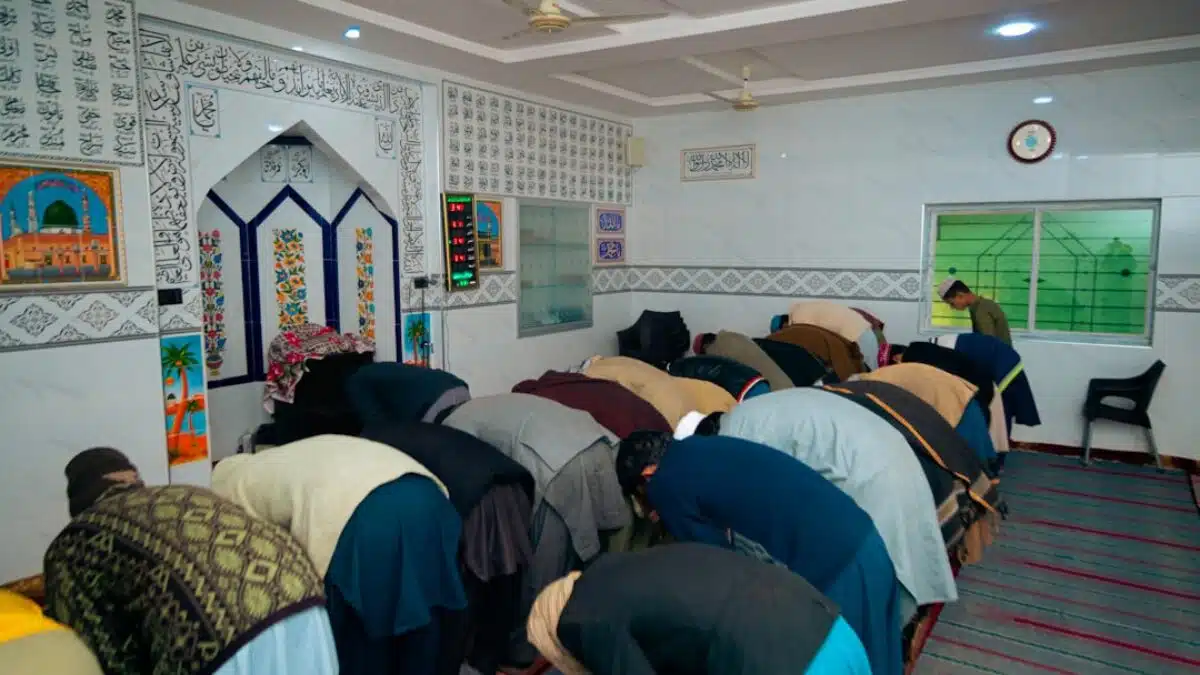Consistency in the five daily prayers (Salah) is the single most visible sign of a Muslim’s relationship with Allah. Yet for many believers it is also the most challenging worship to maintain amid modern distractions, irregular work schedules, and the constant buzz of digital life. The good news is that steadfastness in Salah is not a mysterious gift given to a few; rather, it is the natural result of deliberate daily habits that anyone can learn and refine. This guide distills time-tested strategies, contemporary research on habit-formation, and authentic Prophetic practice into an actionable roadmap that will help you pray on time, every time—starting today.
Understanding Consistency in Salah
Before diving into techniques, let’s define what consistency really means. In Islamic jurisprudence, “ada” (performing the prayer inside its prescribed time) is the baseline, while “fajr al-sunnah” and “rawatib” prayers are commendable extras. Consistency therefore has two layers:
- Foundational: Never missing the five obligatory prayers within their respective time-frames.
- Aspirational: Adding the confirmed Sunnah and Nawafil prayers with regularity.
The Prophet ﷺ warned that the first matter a person will be questioned about on the Day of Judgement is Salah; hence maintaining its consistency is literally safeguarding the key to Paradise. Understanding this spiritual weight grounds every subsequent habit we build.
Why Consistency Feels Hard (Neuroscience & Lifestyle)
Modern neuroscience reveals that habits form through a neurological loop: Cue → Routine → Reward. Modern life disrupts this loop in four ways:
- Blurred Cues: Artificial lighting and screen glow weaken natural light cues for Fajr and Maghrib.
- Variable Routines: Shift work, travel, and social events constantly shift our schedule.
- Delayed Rewards: The spiritual reward of Salah is intangible in the short term, so dopamine-driven apps win the battle for attention.
- Decision Fatigue: Choosing when and where to pray each day drains willpower.
Once we recognize these obstacles, we can reverse-engineer solutions that strengthen the cue, automate the routine, and amplify the reward.
Key Components of Consistent Salah
Six pillars uphold long-term consistency. Think of them as the “6S Framework”:
- Schedule
- Space
- Simplicity
- Support
- Supplication
- Self-audit
1. Schedule: Anchoring Prayer to Fixed Daily Events
Willpower is unreliable; environmental triggers are not. Link each prayer to an unmovable daily event:
| Prayer | Anchor Event | Buffer (Minutes) | Example |
|---|---|---|---|
| Fajr | First alarm ring | 0 | Alarm labeled “Fajr straight to prayer mat” |
| Dhuhr | Work lunch break | 5 | Set phone alert 5 min after scheduled break |
| Asr | Kids arrive home | 10 | Family prayer as soon as backpacks drop |
| Maghrib | Sunset adhan app | 0 | Pause Netflix, head to musalla |
| Isha | House lights dim | 15 | Smart bulb routine cues Isha prep |
Tip: Write your anchors on a sticky note and place it on your bathroom mirror for the first 21 days until the association becomes automatic.
2. Space: Designating a Micro-Mosque
Physical friction—finding a clean spot, rolling out a prayer mat—breaks momentum. Counter this by creating a “micro-mosque”:
- At home: A corner shelf with folded mat, compass, and mini-Qibla arrow.
- At work: A labeled drawer with travel-size musalla and compressed-wipe packet.
- While traveling: A lightweight foldable mat and digital Qibla app bookmark.
Psychologists call this “environmental priming”; the moment your eyes land on the mat, the brain receives a non-negotiable cue to pray.
3. Simplicity: Reducing Decision Points
The Prophet ﷺ loved consistency even if the quantity was small. Apply Kaizen—small incremental improvements:
- Start by never missing the obligatory prayers for 40 days before adding Sunnah.
- Recite the short surahs you know well; expand later.
- Use the same simple duas after each prayer to shorten transition time.
4. Support: Leveraging Social and Technological Accountability
Humans are hard-wired for communal worship. Create layers of support:
- Family Habit: After Maghrib, gather everyone in the living room for prayer before dinner.
- Friend Pact: Text each other a green check emoji after every prayer; missed prayer = phone call reminder.
- App Tracker: Use apps like Muslim Pro or PrayerBook to log streaks; the visual chain motivates continuation (Seinfeld Strategy).
5. Supplication: Invoking Allah’s Help
Consistency is ultimately tawfiq (divine enablement). Establish a daily dua routine:
- After Fajr, recite “Allahumma a’inni ‘ala dhikrika wa shukrika wa husni ‘ibadatika” seven times.
- Before sleep, ask Allah to make Salah the coolness of your eyes; this emotional framing links prayer to comfort.
6. Self-audit: Weekly Reflection and Adjustment
Every Friday after Jumu’ah, spend five minutes reviewing your prayer log:
- Count the number of on-time prayers (green), delayed (yellow), and missed (red).
- Identify the trigger failure—was the alarm too soft, or did a meeting overrun?
- Adjust one variable for the coming week, e.g., set a louder tone or block calendar 10 min before Dhuhr.
Benefits and Importance of Consistent Salah
Spiritual Rewards
The Qur’an promises “Indeed, prayer prohibits immorality and wrongdoing” (29:45). Consistent Salah creates a metronome of taqwa—each prayer resets focus on Allah, making sin less attractive.
Psychological Well-Being
Harvard studies on ritual and mindfulness show that scheduled pauses reduce cortisol levels. The five daily prayers act as “temporal landmarks” that fracture the day into manageable, meaningful units, lowering stress and increasing perceived control.
Social Cohesion
When a family or office team synchronizes around prayer times, mutual respect deepens. Children witness the primacy of worship, and colleagues learn to value boundaries, fostering an atmosphere of positive peer pressure.
Practical Applications: Building Your 30-Day Consistency Blueprint
Week 1: Cue Engineering
- Day 1–2: Install adhan apps on all devices; set the tone to a melodious recitation you love.
- Day 3–4: Create physical anchors—place prayer mats in bedroom, living room, and car trunk.
- Day 5–7: Draft a Prayer Schedule Card and tape it to your workstation; include local prayer times plus 5-minute buffer.
Week 2: Habit Stacking
Piggyback new micro-habits onto existing ones:
- After brushing teeth at night, immediately lay out next day’s prayer outfit.
- After parking at the office, perform two rak’ahs in the car park to lock in Dhuhr.
- After every shower, make wudu to stay perpetually ready, eliminating another decision point.
Week 3: Social Reinforcement
- Join or create a “Salah Buddy” WhatsApp group; post daily streak screenshots.
- Schedule a mid-week virtual prayer via video call for travelers or remote workers.
- Reward milestones: after 7 consecutive days on time, treat yourself to a new misbaha or Qur’an copy.
Week 4: Optimization & Troubleshooting
Conduct a “Friction Audit”:
| Friction Point | Quick Fix |
|---|---|
| Forgot wudu break at work | Keep a 250 ml bottle and plastic cup in drawer for quick istinja/wudu. |
| Noisy household | Use noise-cancelling earbuds with adhan timer set to vibrate. |
| Travel across time zones | Pre-download prayer times for destination; set alarms in local time. |
By the end of four weeks, your neural pathways will have begun rewiring; missing a prayer will feel as odd as forgetting to brush your teeth.
Advanced Strategies for Long-Term Mastery
Leveraging Ramadan Momentum
Ramadan’s heightened spirituality is an accelerator. Use the last ten nights to:
- Lock in a 20-day streak before Eid, then maintain the “post-Taraweeh” high by praying Isha immediately after breaking the fast.
- Record a video pledge on Laylatul Qadr stating your intention to maintain the same prayer vigilance after Ramadan; watch it every morning for reinforcement.
Data-Driven Consistency
Create a simple Google Form with check-boxes for each prayer. Every night, log yes/no plus mood rating (1–5). After 60 days, graph the data; you will discover which days (e.g., Friday after Jumu’ah) or emotions (stress ≥4) correlate with missed prayers, allowing targeted tweaks.
Teaching Others to Cement Your Own Habit
The “Protege Effect” shows that teaching improves the teacher’s retention. Volunteer to lead your children’s weekend prayer circle or record a 60-second TikTok tip on preparing for Salah. Articulating the process deepens your own commitment.
Frequently Asked Questions
What if my work meeting runs exactly at Dhuhr time?
Pre-negotiate a “prayer clause” in your work culture. Politely inform colleagues at the start of recurring meetings: “I step out for five minutes at 1:15 pm for prayer; feel free to continue and I’ll rejoin.” In most jurisdictions, religious accommodation is protected. If truly unavoidable, combine Dhuhr with Asr (jam’ ta’khir) but make this the exception, not the norm.
How do I stay consistent when traveling across multiple time zones?
Follow the “3-2-1 Rule”:
<li
























Post Comment